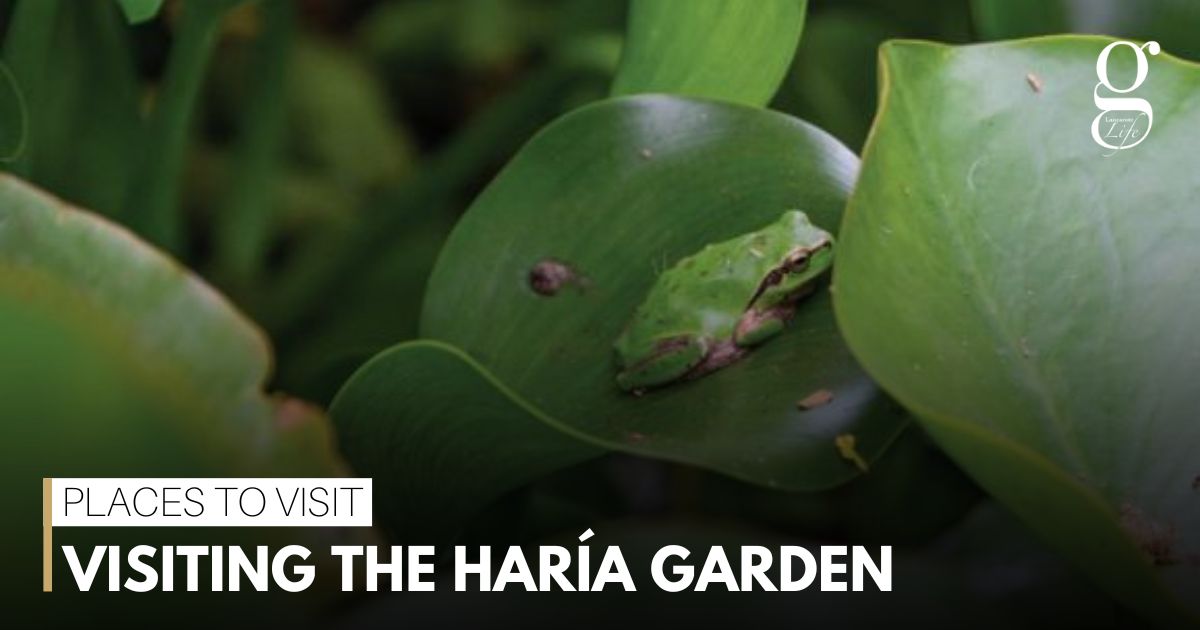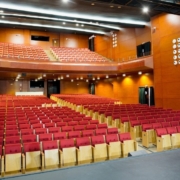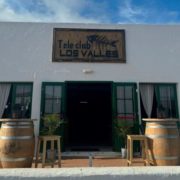The centre of the town of Haría is home to one of the most important gardens on Lanzarote – a plot that David Riebold has dedicated to the native plant life of the island. It’s a fascinating, inspiring place that we had the immense pleasure of visiting recently.
David’s plot is a long stretch of land running parallel to the main barranco that runs through Haría, channelling rainwater from the surrounding hills. When he bought the land over 30 years ago, he originally planned to focus on drought-resistant trees, but the garden has since become a haven for the native plants of Lanzarote.
An increasing awareness of local species, helped by the work of David Bramwell – the Liverpool-born botanist who specialised in Canarian flora, urged David to focus on local plants, and the results can be seen throughout his garden, where there’s always something in bloom, and where maintenance is kept to an absolute minimum.
On our way to Haría we’ve already seen several of the gorgeous, pink flower clusters of the Aeonium lancerottense – Lanzarote’s own native succulent, but David also shows us another local speciality, the Aeonium balsiferum – a yellow-flowering aeonium with a fragrant scent that is scarce in the wild owing to its popularity with goats.
“Gardeners always say the same thing,” smiles David, “And that’s “You should have been here last month”.” If we had, he insists we would have seen the delicate trumpet-shaped flowers of the Corregüela de Famara, a species of convolvulus that is native to the cliffs of Famara – an incredibly rich and biodiverse area which has more native species per square kilometre than anywhere else in Europe.
David is enthusiastic to show us the Caralluma burchardii, a strange little succulent plant that is native to the Eastern Canaries. “When I started, the Cabildo used to give away free specimens of local plants at the experimental farm in Tahiche,” says David. “But I suspect the garden centres started complaining and that stopped. Now it’s a lot harder to get hold of them,” he says.
One of the most enchanting elements of the garden is revealed early, as we find a small pond full of waterlilies. Little tree frogs are everywhere to be seen and David tells us that later in the year they’ll climb up the palm trees, from where their croaking can be easily heard.
Another surprise comes a little later as David offers us a sweet mulberry from a bush that is producing large, ripe fruit that stains our hands and mouths.
On a tree we see the head of a lizard impaled on one of the tree’s twigs. This is the work of a shrike, or “butcher bird”, one of many local bird visitors that come to the garden.
There are a couple of Canarian pines which thrive on the waste washing machine water, but David’s not keen on extending them – “The needles make the soil so acid that nothing else can grow,” says David, and he has ample experience of tree-growing here.
Around the garden there are various species of asparagus shrubs, pistachio trees and azabuches, or wild olive trees, some of which are protected by Tamarix canariensis – the “Tarajal”, which provides one of the most effective local windbreaks for gardeners.
A WORK IN PROGRESS
David insists that if he’d planned the garden completely from the start, it would have turned out as a “dog’s dinner”. Instead, over the three decades he had developed it, he has learned from mistakes and experience, and that educational process is still continuing.
“I’ve also learned what not to grow,” says David, citing acacia trees and araucaria (monkey puzzles) as examples. On our visit we barely scratch the surface of this magical place – here’s a tabaiba, there’s a drago plant, and everywhere there’s that strangely subtle sense of delicate beauty that Lanzarote’s plant life offers. It’s often understated but is deeply appealing – a blend of resilience and gentleness that encapsulates an island.
You can find out more about David’s garden at www.harialanzarote.com, and if you’re really interested in finding out more, he’s happy to receive visitors, too.
For regular updates, pictures and videos of Lanzarote be sure to like and follow our Facebook page “Gazette Life Lanzarote”.











